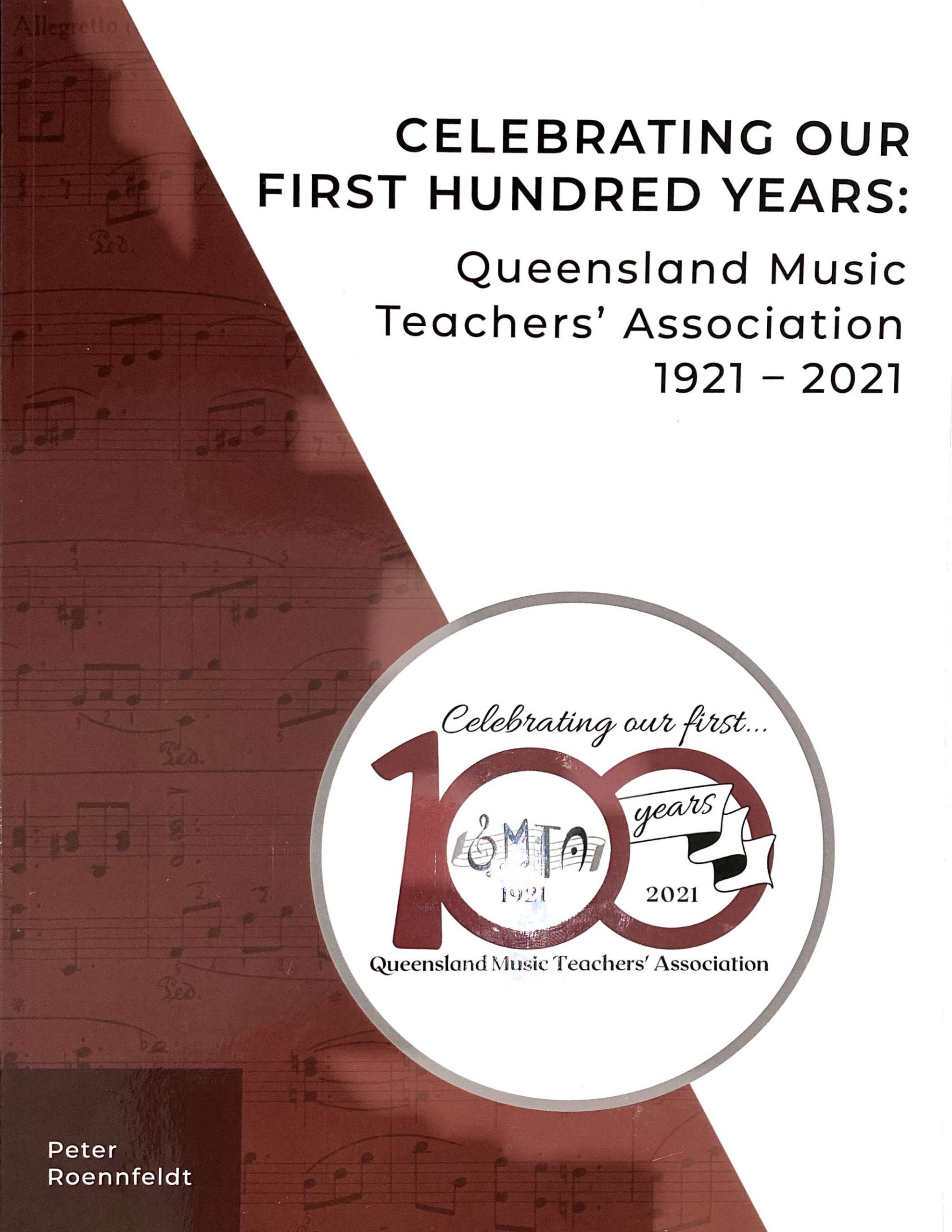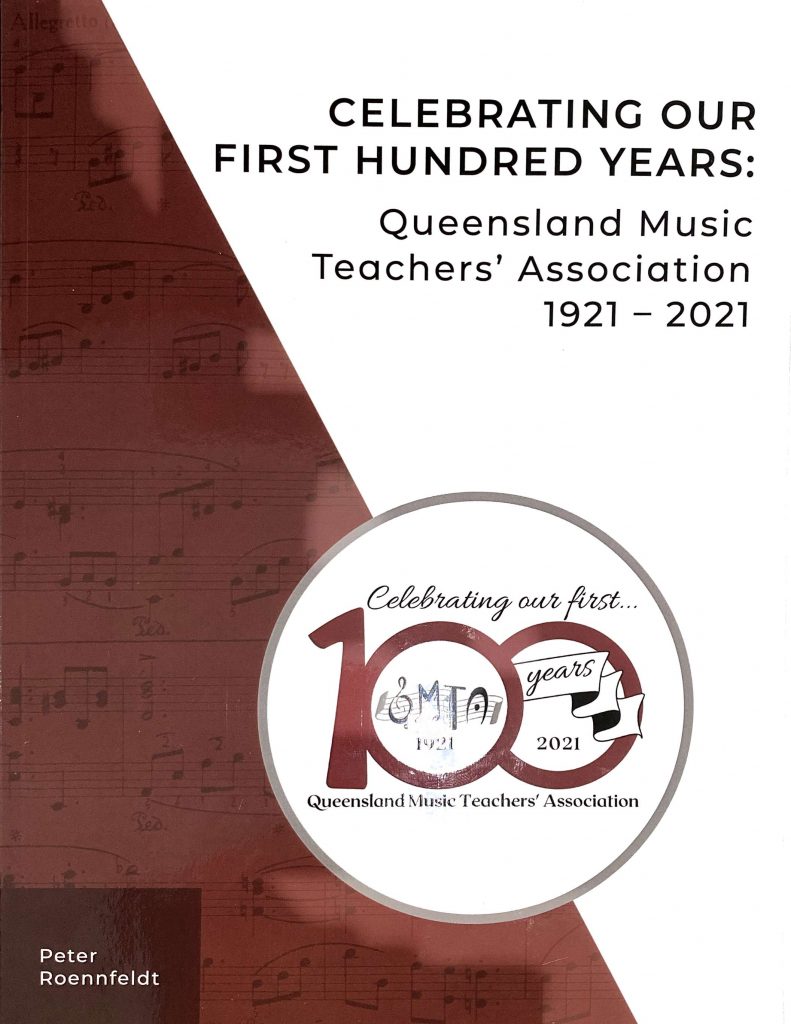Peter Roennfeldt
Published by the Queensland Music Teachers’ Association, Taringa, Qld
ISBN 978 0 646 84826 6
A centenary is always worth celebrating! In Australia, 100 years is not long in terms of Western civilisation, so it is, indeed, wonderful that the Queensland Music Teachers’ Association (QMTA) has been in existence since 1921 and continues to flourish.
Professor Roennfeldt has written the story of this organisation with great heart and luminous insight. Using many primary sources (meetings of meetings, newspaper clippings, letters, publications, newsletters, journals and photos), in his archival research, he has focussed on people, the organisation and its impact on the community, not only from a local perspective, but state-wide and nationally. It is a story of evolution, of an organisation led by some exceptional people, who have taken it from its genesis through to the modern age.
It chronicles the impact of the fledging organisation from two World Wars right through to floods, and in recent years, the COVID-19 pandemic. He does not avoid noting the controversies and issues at hand, such as internal conflicts and setbacks in the early years, accreditation, country members experiencing a sense of isolation, tuition fees, the at times piano-centric nature of its undertakings, and regionalisation (in forming branches or teacher groups). But from out of this plethora of problems, a story of great enterprise, energy and innovation has arisen.
Personalities loom large in this fascinating account, including the many famous visiting musicians, as well as volunteers, staff and a myriad of people who have had connection with the association and its members. Hundreds of names weave their way into this story (an extensive index is listed at the end).
Always of interest are the earliest of figures who put in place the foundations of what was to become a significant part of music teaching history in Queensland, such as Percy Brier, William Preston-Daly, George Samson, and Emily Suter. But through this evolution, one reads about the engagement of teachers, who either go on to form Council, or become Honorary Life Members and Patrons.
Over a century, it is expected somewhat that an organisation should morph into different structures (along with mutations on the formal name of the organisation). Government compliance, the location of its various premises, its thrust into the Professional Development arena, as well as various financial challenges are all noted.
The interrelationships which exist with the QMTA over time have been well documented; the cohort of examination boards, eisteddfodau, tertiary institutions (including the assistance given to the establishment of the Queensland Conservatorium), corporate entities, choral and orchestral societies are all discussed.
The many and varied recitals, workshops and masterclasses, from professional musicians (both local and visiting such as Arthur Benjamin, Isador Goodman, Nancy Weir, Miriam Hyde, Max Olding, Pamela Page, Alan Lane, Piers Lane) give a snapshot of the time period, and even the musical tastes of audiences and teachers, throughout the decades.
Of interest is even the journey, quite visually time-capsuled (both by photographs and scanned programmes). Such a visual history naturally captures the change in dress codes over the years, from formal to more smart casual attire.
The book is divided into three parts. The first part is chronological, noting various time periods, for example 1921-1930, 1931-61, 1960s-2000 and 2001-2021. Part 2 gives a geographic flavour through its exposition of the local branches and teacher groups in North Queensland, Central Queensland and South-East Queensland, noting that the very vastness of the Queensland geography makes the Association’s mission even more challenging. Part 3 give a broader picture, looking at its connection with examination bodies, tertiary institutions and other partner groups. In addition, the compilation’s appendices, references and indexes are most useful and comprehensive.
This very readable account is more than just a history of a professional organisation. It is a book which overtly conveys a sense of the impact of the QMTA, richly illustrating its service as a “pillar in the musical ecosystem” and of how it “has constantly adapted to changing contexts and forged partnerships which have helped to amplify its role”.


